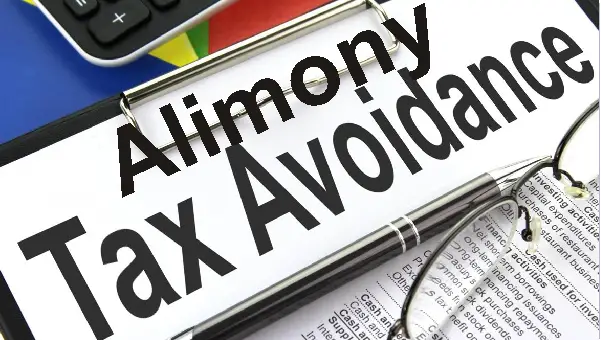
For those looking to avoid paying taxes on alimony, there are specific basics you need to understand, lest you violate the laws and get punished for it.
During spousal support negotiations, the parties must consider the ancillary effects of each of their choices. Insurance coverage, retirement accounts, and taxation may be included in the discussion.
It’s important to note that tax laws handle property distributions, alimony, and child support differently, and different states, as well as the federal government, have distinct tax regulations.
There are important factors to consider if the plan is to avoid paying taxes on alimony or lowering taxes on a divorce settlement might be achieved. Before getting into the details, it’s a good idea to gain a comprehensive idea of federal and state tax policies regarding divorce.
Taxes and Alimony
One of the best ways to protect your money during a divorce is to understand the taxes ramifications of alimony.
If you finalized your divorce or support arrangement before January 1, 2019, your alimony may be tax-deductible.
The Tax Cuts and Jobs Act (TCJA) was signed into law by US President Donald Trump on December 22, 2017, and it included major tax reform which had to do with paying, taxing alimony, and reporting alimony tax.
The Federal Rule Change on Taxing Alimony

There has been Fdederal Rule Changes on Taxing Alimony
If your divorce was finalized on or before December 31, 2018, alimony payments are entirely tax-deductible for the payor, whether you itemize or not, under the federal TCJA. Alimony payments are effectively not included in the payor’s income for tax reasons.
If your divorce settlement was finalized on or after January 1, 2019, the person paying alimony will not be able to deduct the payments from their taxes. Alimony recipients are not required to file these payments as income on their tax returns.
Only the person making alimony payments must pay taxes on this money in this scenario. As a result, an ex-spouse who does not work may not have to pay any income taxes, whereas the payor is responsible for both.
What Counts as Alimony Per IRS?
The IRS considers the following to be alimony:
- The couple does not file a combined return, and the payment is made in cash (including checks or money orders)
- The payment is provided to or for a spouse or former spouse in accordance with the terms of a divorce or separation agreement.
- When the payment is made, the spouses are not members of the same residence (this requirement applies only if the spouses are legally separated under a decree of divorce or of separate maintenance)
- After the death of the recipient spouse, there is no need to make the payment (in cash or property).
- The money isn’t applied to child support or a property settlement.
However, according to the IRS, alimony does not include:
- Aid to children
- Property settlements that are not paid in cash, whether in a lump sum or in installments
- Payments that are a portion of your community property income and are made by your spouse
- Payments to keep the payer’s property in good repair
- Reaping the benefits of the payer’s property
- Payments made voluntarily.
How to Avoid or Reduce Taxes on Alimony
Your chances of avoiding or reducing taxes in a divorce settlement will be different from those of others in comparable but nevertheless unique situations
Generally, it’s beneficial to consider alimony and IRAs, the status of your filing, and who claims child custody. the possibility of a loss carry-forward, the child’s medical care costs, and primary residence tax provisions.
Alimony and IRAs
If you receive taxable alimony and deposit it into an individual retirement account (IRA), it will count as compensation. If you however do not pay taxes on your spousal support (for divorces signed Jan. 1, 2019), you cannot use it to contribute to either an IRA or a Roth IRA.
You can deduct the worth of your alimony payments from your income taxes if you signed your divorce agreement before December 31, 2018. If you have any losses carryforwards, try to get them applied to your returns. You may use an alimony tax deduction calculator.
Filing Status
If you’re still legally married at the end of the year, you have the option of filing a joint return (which will save you money) or choosing the married-filing-separately status if you want to keep your finances separate.
Married-filing-separately is especially beneficial for couples who don’t want to be responsible for each other’s obligations and resources, as well as for circumstances where one spouse earns much more than the other (and so incurs significantly higher taxes).
To avoid paying taxes on alimony, you can also file as the head of household to earn a larger standard deduction and lower tax brackets. However, this only applies if you lived apart from your spouse for the last six months of the year,
It also applies if you filed separate returns, had a dependant living with you for more than half of the year, and paid more than half of the upkeep for your home can you employ this strategy.
Child Care

You can reduce alimony tax by Claiming child tax credit
If you’re a non-custodial parent, attempt to persuade your soon-to-be-ex to sign a waiver committing not to claim the child as an exemption on his or her tax return, especially if your taxable income is greater. F
or each child, only one parent can claim the exemption, therefore if the custodial parent waives theirs, you can use it. This includes the child tax credit as well as any other relevant credits, deductions, or exemptions for your children.
Even though your ex-spouse has custody of the child, if you continue to pay a child’s medical bills after the separation, you can deduct those charges from your medical expenses.
Medical bills are only deductible if they exceed 7.5 percent of adjusted gross income, but the child’s bills you pay could take you over the 7.5 percent mark.
Primary Residence
If you sell your home as part of your divorce, you may be able to avoid paying taxes on the first $500,000 of gain if you meet a two-year ownership-and-use requirement. To be eligible for the entire exemption, the sale must be completed before the papers are signed.
Sales following a divorce may qualify for a reduced exclusion even if you don’t achieve the full two-year residency requirement. If the duration was one year rather than two, you can each exclude $125,000 in gain.
If that fails, let’s say you and your ex-spouse still own the house together after your divorce. You can still claim the tax exemption for the sale after that. You can only claim the individual exemption in this scenario, which is worth up to $250,000.
Therefore, your spouse can buy you out of the house without incurring capital gains. Divorce law deems it a marital transfer if your spouse pays you for your portion of the home’s value. This enables you to effectively collect the sale price of the home without having to pay taxes on it.
Conclusion
If you are wondering how much tax to pay on alimony received, always remember the tips outlined in this post. But whatever you pay, always remember to keep proof of alimony payments for future issues.
Whether you belong to the groups asking “do I have to claim alimony as income in 2020” or the groups enquiring “how to avoid paying taxes on alimony,” one thing is sacrosanct – ensure you stay on the side of the law, as judges take seriously the issue of violating their alimony orders.




